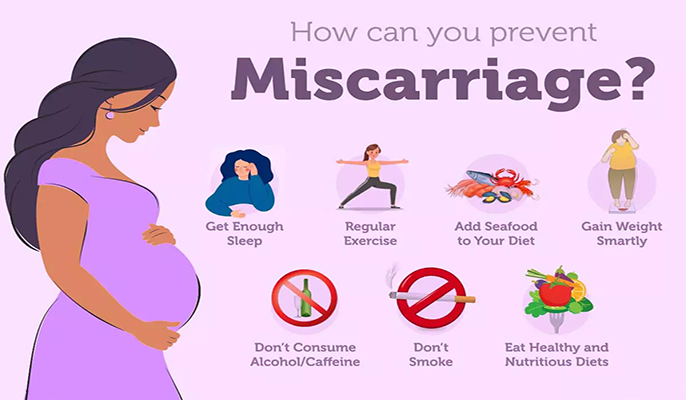Trimester Wise Pregnancy Tips - week by week

A full-term pregnancy has three trimesters and lasts around 40 weeks — starting from the first day of the last menstrual period. In each trimester, the fetus meets specific developmental milestones.
While 40 weeks is the usual time frame, a full-term baby can be born as early as 37 weeks and as late as 42 weeks.
The Office on Women’s HealthTrusted Source defines the three trimesters as follows, though the timing can vary:
first trimester: 1–12 weeks
second trimester: 13–28 weeks
third trimester: 29–40 weeks
Some people also talk about a fourth trimester, which is the 3-month transitional period after delivery.
Read on for more information about what to expect during each pregnancy trimester.
First trimester pregnancy in weeks
The first trimester is weeks 1-14. During the first trimester, both your and your baby’s body will be changing rapidly. It can be an overwhelming time emotionally and physically, especially for first-time moms and parents. This is also when many expecting moms experience symptoms such as fatigue, nausea, morning sickness and more.
Weeks 10-14: Congratulations! You are in the third month of pregnancy and almost done with your first trimester! During these last few weeks of the first trimester, you can expect your baby to be able to bend its limbs, make and release urine and develop genitals and fingernails.
Second trimester pregnancy in weeks
You’ve made it to your second trimester! The second trimester is considered to be weeks 14-28. During this trimester is when expecting moms find that they feel less nauseated and their energy levels have returned.
When it comes to the arrival of babies, nothing is guaranteed. During this trimester is typically when you should start planning and considering where and how you want to give birth. There are five common delivery methods that should be explored so you can begin creating a birth plan with your partner.
We understand that life can get busy and it can be hard to plan for the day you welcome your bundle of joy into this world. The Mother Baby Center has made it easy for you to take a virtual tour of our three convenient locations in the Twin Cities metro area.
Now that you’ve crossed off the two most important to-do items, check out what else is recommended in a second trimester to-do list for expecting parents.
Weeks 14-15: During weeks 14-15, you should be working your way through your third month of pregnancy. In these coming weeks, your baby will develop their scalp or hair patterns and stronger bones.
Weeks 16-18: Welcome to one of the most exciting weeks of pregnancy! Weeks 16-18 means that you have started your fourth month of pregnancy. During these weeks, you can expect your baby to be able to move their eyes, develop toenails and hear sounds. Starting week 18 is also when mid-pregnancy ultrasounds are scheduled and if you choose to know, you can find out the gender of your baby!
Weeks 19-21: Congratulations! You are a little over halfway pregnant, or five months, by the end of week 20. During this period, you can expect your baby to move more.
Third trimester pregnancy in weeks
Weeks 37-40: You’re at the home stretch! At this point, you should be working through your ninth month of pregnancy and your baby could come any day.
What are the benefits of exercise during pregnancy?

Exercising for 30 minutes on most, or all, days can benefit your health during pregnancy. Exercising for just 20 minutes, 3 or 4 days a week, is still beneficial, as well. The important thing is to be active and get your blood flowing.
To have success in completing exercises during pregnancy, it is a good idea to plan the days and times during the week when you will exercise. Prenatal yoga is a great, low impact exercise that can be highly beneficial for pregnant women.
Here are some of the benefits from exercise during pregnancy you may experience:
- Reduces backaches, constipation, bloating, and swelling
- May help prevent or treat gestational diabetes
- Increases your energy
- Improves your mood
- Improves your posture
- Promotes muscle tone, strength, and endurance
- Helps you sleep better
- Regular activity also helps keep you fit during pregnancy and may improve your ability to cope with labor. This will make it easier for you to get back in shape after your baby is born.
Exercising and changes associated with pregnancy
Your body will undergo many changes during pregnancy. Some will affect your ability to exercise, or require you to modify your exercise routine, including:
- Hormones such as relaxin loosen ligaments, which could increase your risk of joint injuries (such as sprains).
- As pregnancy progresses, your weight will increase and you will experience changes in weight distribution and body shape. This results in the body's centre of gravity moving forward, which can alter your balance and coordination.
- Pregnancy increases your resting heart rate, so don't use your target heart rate to work out the intensity of your exercise. In healthy pregnant women, exercise intensity can be monitored using a method known as Borg's Rating of Perceived Exertion (RPE) scale. This measures how hard you feel (perceive) your body is working.
- Your blood pressure drops in the second trimester, so it is important to avoid rapid changes of position - from lying to standing and vice versa - so as not to experience dizzy spells.
Which exercises during pregnancy are beneficial
- Before you begin exercising, remember it is important to talk to your health care provider. If you typically get little or no activity, walking is a great exercise to start with. Walking is usually safe for everyone, it is easy on your body and joints, and it doesn't require extra equipment. It is also easy to fit into a busy schedule.
- Squatting during labor may help open your pelvic outlet to help your baby descend, so practice squatting during pregnancy. To do a squat, stand with feet shoulder width apart and slowly lower into a squat position. You should keep your back straight, heels on the floor and your knees shouldn't protrude in front of your feet. Hold the squat for 10 to 30 seconds; you can rest your hands on your knees.
Then slowly stand back up, pushing up from your knees with your arms, if you need to. Repeat this 5 times working up to more. - Pelvic tilts strengthen the muscles in your abdomen and help alleviate back pain during pregnancy and labor. To do pelvic tilts get on your hands and knees. Tilt your hips forward and pull your abdomen in. Your back should slightly round. Stay in this position for a few seconds then relax without letting your back sag. Repeat a couple of times, working up to 10.
What kinds of activities are safe during pregnancy?
If you're healthy and you exercised before you got pregnant, it's usually safe to continue your activities during pregnancy. Check with your provider to be sure. For example, if you're a runner or a tennis player or you do other kinds of intense exercise, you may be able to keep doing your workouts when you're pregnant. As your belly gets bigger later in pregnancy, you may need to change some activities or ease up on your workouts.
If your provider says it's OK for you to exercise, pick activities you enjoy. If you didn't exercise before you were pregnant, now is a great time to start. Talk to your provider about safe activities. Start slowly and build up your fitness little by little. For example, start with 5 minutes of activity each day, and work your way up to 30 minutes each day.
These activities usually are safe during pregnancy:
- Walking. Taking a brisk walk is a great workout that doesn't strain your joints and muscles. If you're new to exercise, this is a great activity.
- Swimming and water workouts. The water supports the weight of your growing baby, and moving against it helps keep your heart rate up. It's also easy on your joints and muscles. If you have low back pain when you do other activities, try swimming.
- Riding a stationary bike. This is safer than riding a regular bicycle during pregnancy. You're less likely to fall off a stationary bike than a regular bike, even as your belly grows.
- Yoga and Pilates classes. Tell your yoga or Pilates teacher that you're pregnant. The instructor can help you modify or avoid poses that may be unsafe for pregnant women, like lying on your belly or flat on your back (after the first trimester). Some gyms and community centers offer prenatal yoga and Pilates classes just for pregnant women.
- Low-impact aerobics classes During low-impact aerobics, you always have one foot on the ground or equipment. . Examples of low-impact aerobics include walking, riding a stationary bike and using an elliptical machine. Low-impact aerobics don't put as much strain on your body that high-impact aerobics do. During high-impact aerobics, both feet leave the ground at the same time. Examples include running, jumping rope and doing jumping jacks. Tell your instructor that you're pregnant so that they can help you modify your workout, if needed.
- Strength training. Strength training can help you build muscle and make your bones strong. It's safe to work out with weights as long as they're not too heavy. Ask your provider about how much you can lift.
You don't need to belong to a gym or own special equipment to be active. You can walk in a safe area or do exercise videos at home. Or find ways to be active in your everyday life, like doing yard work or taking the stairs instead of the elevator.
Cautions for pregnancy exercise
While most forms of exercise are safe, there are some exercises that involve positions and movements that may be uncomfortable or harmful for pregnant women. Be guided by your doctor or physiotherapist, but general cautions include:
- Avoid raising your body temperature too high - for example, don't soak in hot spas or exercise to the point of heavy sweating. Reduce your level of exercise on hot or humid days. Stay well hydrated.
- Don't exercise to the point of exhaustion.
- If weight training, choose low weights and medium to high repetitions - avoid lifting heavy weights altogether.
- Perform controlled stretching and avoid over-extending.
- Avoid exercise if you are ill or feverish.
- if you don't feel like exercising on a particular day, don't! It is important to listen to your body to avoid unnecessarily depleting your energy reserves.
- Don't increase the intensity of your sporting program while you are pregnant, and always work at less than 75 per cent of your maximum heart rate.
- In addition, if you develop an illness or a complication of pregnancy, talk with your doctor or midwife before continuing or restarting your exercise program.
Exercises to avoid while pregnant
During pregnancy, avoid sports and activities with increased risk of, or characterised by:
- abdominal trauma or pressure - such as weightlifting
- contact or collision- such as martial arts, soccer, basketball and other competition sports
- hard projectile objects or striking implements - such as hockey, cricket or softball
- falling - such as downhill skiing, horse riding and skating
- extreme balance, co-ordination and agility - such as gymnastics
- significant changes in pressure - such as SCUBA diving
- heavy lifting
- high-altitude training at over 2000 m
- supine exercise position (lying on your back) - the weight of the baby can slow the return of blood to the heart; some of these exercises can be modified by lying on your side
- wide squats or lunges.
If you're not sure whether a particular activity is safe during pregnancy, check with your healthcare professional.
Who should not exercise?
Anyone with a medical condition, such as asthma, heart disease, hypertension, diabetes, or a pregnancy-related condition, should speak to their doctor before changing their exercise habits.
The doctor may advise resting if a woman has:
- vaginal bleeding or spotting
- a low placenta or placenta previa
- a history or possibility of pregnancy loss or preterm delivery
- a weak cervix
A healthcare provider can help develop a program to suit the individual.
Which type sports to avoid
Some forms of exercise are not suitable during pregnancy. These include:
- scuba diving
- some contact sports, such as kickboxing and judo
- activity above an altitude of about 8,000 feet
- heavy weightlifting and activities that require straining
These activities may entail additional risks, such as injury and altitude sickness. Activities with a risk of falling - such as downhill skiing, hockey, and cycling - may also not be suitable.
The takeaway
Staying physically active during pregnancy is beneficial for both mom and baby.
Including some form of exercise most days of the week can help keep your core strong, your muscles fit, and your cardiovascular system in top shape. Plus it can do wonders for your mental health (yay for endorphins!).
Make sure to listen to your body and stop if you feel any discomfort or pain. And as always, talk with your doctor if you have any questions or concerns about how your body is responding to an exercise program.







































